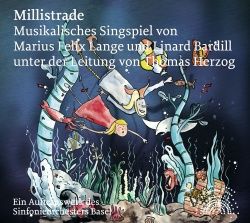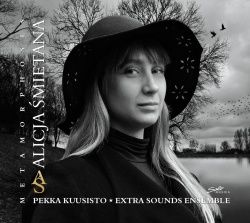Liv Migdal – Acht Jahreszeiten
Description
The existing literature on Vivaldi may take up a great deal of archive space, but that mass of paper seems insignificant in comparison with the power of the music itself. Now, in the 21st century, the work has successfully completed its progressive path to globalisation, having found its way into every corner of the planet, albeit often immersed in a variety of crossover sounds.It might be said that Vivaldi’s “Spring” theme is inevitably implanted in our minds from the day we draw our first breaths, or perhaps even in our mother’s womb before birth.Between 1965 and 1969 Piazzolla composed a cycle of four compositions, Las Cuatro Estaciones Porteñas for a quintet comprising a violin, electric guitar, piano, double bass and bandoneon. This work is a fusion of artistic initiatives, combining the fundamental traits of jazz, classical works and Afro-Hispanic music.
Liv Migdal started her studies as an eleven-year-old protégée at the Rostock College of Music and Drama under the tuition of Christiane Hutcap. She graduated with distinctionthere. She continued her musical training at the Mozarteum in Salzburg, where she attended the master class of Igor Ozim and completed her master’s programme with distinction. In 2015, she was honoredinSalzburgwith the”Paul-Roczek Award” for her outstandingviolin play.
Tracklist
| La Primavera op. 8 No. 1 | Antonio Vivaldi | |
| I. Allegro | 03:19 | Antonio Vivaldi |
| II. Largo e pianissimo | 02:20 | Antonio Vivaldi |
| III. Allegro | 03:56 | Antonio Vivaldi |
| L´Estate op. 8 No. 2 | Antonio Vivaldi | |
| I. Allegro mà non molto | 04:41 | Antonio Vivaldi |
| II. Adagio | 01:48 | Antonio Vivaldi |
| III. Allegro | 02:58 | Antonio Vivaldi |
| L´Autunno op. 8 No. 3 | Antonio Vivaldi | |
| I. Allegro | 04:44 | Antonio Vivaldi |
| II. Adagio molto | 02:57 | Antonio Vivaldi |
| III. Allegro | 03:23 | Antonio Vivaldi |
| L´Inverno op. 8 No. 4 | Antonio Vivaldi | |
| I. Allegro non molto | 03:29 | Antonio Vivaldi |
| II. Largo | 01:43 | Antonio Vivaldi |
| III. Allegro | 03:15 | Antonio Vivaldi |
| Las Cuatro Estaciones Porteñas | Astor Piazzolla | |
| Primavera Portena – Allegro | 06:16 | Astor Piazzolla |
| Verano Porteno – Allegro | 06:39 | Astor Piazzolla |
| Otono Porteno | 07:56 | Astor Piazzolla |
| Invierno Porteno – Andante moderato | 07:24 | Astor Piazzolla |
Josef Hofbauer – My Favorite Trumpet Concertos
Artists: Josef Hofbauer
Title: My Favorite Trumpet Concertos
Catalogue No.: SM 234
Release: 04.03.2016
Description
“With this CD I devote myself to a journey with the Schönbrunn Festival Orchestra. A journey through various music genres and their trumpet concertos. It is also a journey through my past…. Each concerto we recorded for this CD has its own story in my past – thus My Favourite Trumpet Concertos” – Josef Hofbauer
Tracklist
| Concerto for Trumpet & Orchestra | Alexander Harutyunyan | ||
| 1 | I. Andante | 08:30 | Alexander Harutyunyan |
| 2 | II. Meno Mosso | 03:10 | Alexander Harutyunyan |
| 3 | III. Tempo I | 02:44 | Alexander Harutyunyan |
| Concerto for Trumpet & Strings | Robert Planel | ||
| 4 | I. Largement – Animè et bien rythmè | 04:42 | Robert Planel |
| 5 | II. Lent et très calme | 04:30 | Robert Planel |
| 6 | III. Vivace – Gai et lèger | 05:26 | Robert Planel |
| Concerto for Trumpet & Strings in D Major | Giuseppe Torelli | ||
| 7 | I. Allegro | 02:00 | Giuseppe Torelli |
| 8 | II. Adagio – Presto – Adagio | 02:30 | Giuseppe Torelli |
| 9 | III. Allegro | 02:06 | Giuseppe Torelli |
| Concerto for Trumpet & Strings in E flat Major | Jan Krtitel Jiri Neruda | ||
| 10 | I. Allegro | 05:20 | Jan Krtitel Jiri Neruda |
| 11 | II. Largo | 04:32 | Jan Krtitel Jiri Neruda |
| 12 | III. Vivace | 04:36 | Jan Krtitel Jiri Neruda |
| Concerto for Trumpet & Orchestra in E flat Major | Joseph Haydn | ||
| 13 | I. Allegro | 06:26 | Joseph Haydn |
| 14 | II. Andante | 03:27 | Joseph Haydn |
| 15 | III. Allegro Rondo | 04:49 | Joseph Haydn |
| 16 | Libertango (Arrangement: Guido Mancusi) | 05:02 | Astor Piazzolla |
| 17 | Gabriel’s Oboe | 03:11 | Ennio Morricone |
Sinfonieorchester Basel – L’Oiseau de feu
Description
All of the three ballets will be presented in the version for orchestra as well as in the version for piano four hands. Unlike for Sacre and Pétrouchka, for L’Oiseau de feu there is no piano arrangement for four hands by Stravinsky himself. Dennis Russell Davies, Principal Conductor of the Sinfonieorchester Basel and pianist has therefore arranged a version for piano four hands – exclusively for this production. The new arrangement is based on the original piano arrangement for two hands by Stravinsky, which is kept in the Paul Sacher Foundation in Basel. Dennis Russell Davies has recorded the arrangement together with his wife Maki Namekawa.
The piano version opens up new perspectives on the orchestra version of L’Oiseau de feu and underlines the compositional value of Stravinsky’s creation.
Tracklist
“L’Oiseau de feu” (The Firebird)
– Version for Orchestra
Sinfonieorchester Basel
– Version for Piano Four Hands
Dennis Russell Davies– Maki Namekawa
Ensemble Raro – Lived & Dreamed – Erlebtes & Erträumtes
Artists: Ensemble Raro
Title: Lived & Dreamed – Erlebtes & Ertraeumtes
Catalogue No.: SM222
Release: 30.10.2015
Description
The three of them also shared an enthusiastic interest in old national traditions, among them the great treasure trove of fairy tales and the wealth of folk melodies and rhythms. Perhaps fairy tales and dreams can help us to endure reality, because they place it in a vast continuum and because individual suffering then becomes part of a greater whole from which no-one is excluded. If that is true, then the music presented here really ought to be available on prescription.
Ensemble Raro was formed in 2004 by four extraordinary young musicians: pianist Diana Ketler, violinist Alexander Sitkovetsky, violist Razvan Popovici and cellist Bernhard Naoki Hedenborg. Their goal is to create unforgettable musical moments and to combine innovative approach with rich European tradition of intimate and sincere chamber music making. In 2011 the Ensemble Raro welcomed new members: violinists Alina Pogostkina and Erik Schumann, clarinetist Thorsten Johanns, hornist Olivier Darbellay and cellist Julian Arp.
Tracklist
| Quartett für Klavier, Violine, Viola und Violoncello a-moll op. 1 |
21’37 |
| I. Allegro appassionato | 6’44 |
| II. Adagio | 7’25 |
| III. Allegro con fuco | 7’22 |
| Quartett Nr. 1 D-Dur, op. 23 für Violine, Viola, Violoncello und Klavier |
35’39 |
| Allegro moderato | 15’29 |
| Andantino e Variazioni | 12’17 |
| Finale. Allegretto scherzando | 7’47 |
| “Märchen” (Pohádka) für Violoncello und Klavier |
12’45 |
| I. Con moto | 5’21 |
| II. Con moto | 4’23 |
| III. Allegro | 2’57 |
| aus “Erlebtes und Erträumtes” für Klavier op. | 6’16 |
| “Den vergessenen Grabhügeln auf unserem Dorffriedhofe” | 6’16 |
| Total | 76:43:00 |
Stradivari Quartett – Mozart – Preussische Quartette
Artists: Stradivari Quartett
Title: Mozart – Preussische Quartette
Catalogue No.: SM230
Release: 18.09.2015
Description
Since its debut in the Zurich Tonhalle in September 2007, the Stradivari Quartet has made a name for itself as an ensemble of great promise and become one of the leading Swiss string quartets. Some thirty performances a year take the Stradivari Quartet to venues all over the world. Highlights include appearances at the Wigmore Hall in London, the Metropolitan Museum in New York, the Kioi Hall in Tokyo, the Shanghai Oriental Hall and the National Center for Performing Arts in Beijing, as well as such prestigious events as the Lucerne Festival, the Bad Kissingen Summer Festival, the Rheingau Music Festival, the Rubinstein Piano Festival in Lódz, the Schleswig-Holstein Music Festival and the Stradivari Festival in Cremona.
The Stradivari Quartet is among the few ensembles in the world performing exclusively on instruments of the famous violin maker Antonio Stradivari. Each of the four instruments has its own history and some have travelled far and wide. They are today all in the possession of the Habisreutinger Foundation and are on loan to the Stradivari Quartet.
Tracklist
| 1. I. Allegretto – Stradivari Quartett |
| 2. Ii. Andante |
| 3. Iii. Menuetto. Allegretto |
| 4. Iv. Allegretto |
| 5. I. Allegro – Stradivari Quartett |
| 6. Ii. Larghetto |
| 7. Iii. Menuetto. Moderato |
| 8. Iv. Allegro Assai |
| 9. I. Allegro Moderato – Stradivari Quartett |
| 10. Ii. Andante |
| 11. Iii. Menuetto. Allegretto |
| 12. Iv. Allegro |
Miku Nishimoto-Neubert – Piano Solo
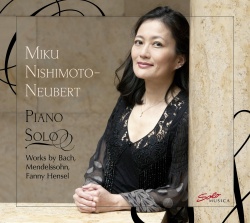 Artists: Miku Nishimoto-Neubert
Artists: Miku Nishimoto-Neubert
Title: Piano Solo – Works by Bach, Mendelsohn, Fanny Hensel
Catalogue No.: SM223
Release: 18.09.2015
Description
They all recognized in Bach’s work those outstanding qualities, which were only accredited to him some time later. Influence of Bach’s music can be found in the works of the Mendelssohn children, even if titles such as “Klavierlieder” (Songs for piano) or “Variations serieuses” belie any immediate connection with Bach. Bach’s concept of form was influenced by the great concertante works of his time. These had a powerful effect on the individual movements of his keyboard suites, which grew into cyclical works for keyboard. These in turn served as models for Romantic character pieces and for cyclical works for piano in the 19th century, particularly for works by Mendelssohn and Schumann.
Miku Nishimoto-Neubert is rightly regarded as an “outstanding Bach soloist”. In order to identify with the complex and differentiated sound-world of Bach, she has, in the past years, made his works something of her own. In her many new Bach interpretations, his best-known works appear as new.
Her playing draws its strength and vitality from a consistent identification with the structural and spiritual demands of Bach’s music. These can be transmitted to the discerning listener only through an open approach and a consistent re-appraisal of one’s own mental and technical resources.
Tracklist
| 1. I. Allemande |
| 2. Ii. Courante |
| 3. Iii. Sarabande |
| 4. Iv. Air |
| 5. V. Menuet |
| 6. Vi. Gigue |
| 7. I. Allegro Moderato |
| 8. Ii. Andante Con Espressione |
| 9. Iii. Larghetto |
| 10. Iv. Presto, ‘Wanderlied’ |
| 11. I. Allemande |
| 12. Ii. Courante |
| 13. Iii. Sarabande |
| 14. Iv. Gavotte |
| 15. V. Polonaise |
| 16. Vi. Bourree |
| 17. Vii. Menuet |
| 18. Viii. Gigue |
| 19. I. Allemande |
| 20. Ii. Courante |
| 21. Iii. Sarabande |
| 22. Iv. Menuet |
| 23. V. Gigue |
| 24. Variations Serieuses In D Minor, Op. 54 |
Duo Arnicans – Werke fuer Piano und Violoncello von Dohnanyi und Chopin
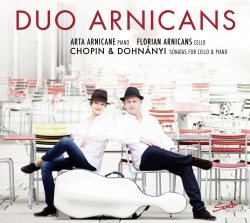 Artists: Duo Arnicans
Artists: Duo Arnicans
Title: Werke fuer Piano und Violoncello von Dohnanyi und Chopin
Catalogue No.: SM226
Release: 07.08.2015
Description
The Duo has performed in numerous concerts and recitals at home and abroad.
The first international concert tour took place in the autumn of 2014, when they had great success in Scotland, England (London) and Latvia (Riga).
The debut album of Duo Arnicans presents an emotionally charged programme reflecting the personalities of the two artists. The Chopin waltz on this CD has special meaning for Florian and his wife. Arranged by Arta for cello and piano, it was performed by close friends as the couple’s personal wedding waltz in August 2014.
Tracklist
| Sonata for cello and piano in B flat major op. 8 | 25’57” |
| Allegro ma non troppo | 7’57” |
| Scherzo: Vivace assai | 4’55” |
| Adagio non troppo | 3’12” |
| Thema con Variazioni – Allegro moderato | 9’54” |
| Introduction et polonaise brillante in C major op. 3 | 9’41” |
| Lento – Alla Polacca | 3’23” |
| Allegro con spirito | 6’17” |
| Waltz in A minor op. 34 for piano , transcription for Violoncello and piano by A. Arnicane | 5’41” |
| Lento | 5’41” |
| Sonata for violoncello & Piano in G minor op. 65 | 31’00” |
| Allegro moderato | 16’00” |
| Scherzo: Allegro con brio | 4’53” |
| Largo | 3’47” |
| Finale: Allegro | 6’18” |
| Total | 72’33” |
Paul Taylor Orchestra – Alphorn & Nordic Winds
Title: Alphorn & Nordic Winds
Catalogue No.: SM221 – 2 CDs
Release: 10.07.2015
Description
In «Alphorn & Nordic Winds» string virtuosos with harp and percussion build a musical bridge from Switzerland to Finland. The composers and performers run a gamut of emotions and movements, a veritable fusion of classical, folk and jazz styles.
Paul Taylor
Tracklist
| CD I | ||
| Concerto grosso 2010 | TIMO ALAKOTILA | |
| Ouverture, vivace | 08:21 | |
| Konzert Alphorn & Streicher | CARL RÜTTI | |
| I | 08:01 | |
| II | 06:25 | |
| III | 03:58 | |
| Improvisation I | ||
| Improvisation I | 03:34 | |
| Karelian Echoes | KAROLIINA KANTELINEN, ANDREAS PEER KÄHLER | |
| Wedding Song | 03:08 | |
| Wolf’s Spell | 04:46 | |
| Concerto Grosso | TIMO ALAKOTILA | |
| Polska, allegro | 04:36 | |
| Viaggio | 05:04 | |
| Running Time | 47:53:00 | |
| CD II | ||
| Concerto grosso 2010 | TIMO ALAKOTILA | |
| Fughetto, presto | 05:13 | |
| Weltreise Suite | ELIANA BURKI | |
| Heiweh | 02:49 | |
| Tango | 04:25 | |
| Homesick | 04:04 | |
| Cairo | 04:32 | |
| Nordic Winds | ||
| Min skog | 03:29 | Trad. Swedish |
| Täss on nainen | 06:57 | SANNA KURKI-SUONIO |
| Tina vieri | 04:35 | SANNA KURKI-SUONIO |
| Improvisation II | ||
| Improvisation II | 02:16 | |
| Smash | TIMO ALAKOTILA | |
| Smash | 03:15 | |
| Altes Guggisberg Lied | Trad. Canton Berne, Harmonisation: H.R. Willisegger | |
| Altes Guggisberg Lied | 03:14 | |
| Running Time | 44:49:00 | |
| Total Running Time | 1:32:42 |
Linard Bardill – Millistrade
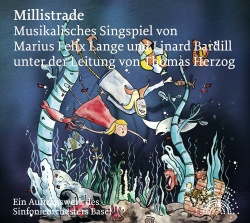 Künstler: Linard Bardill
Künstler: Linard Bardill
Sinfonieorchester Basel
Titel: Millistrade
Katalog Nr.: SOB09
Veröffentlichung: 19.06.2015
Produktbeschreibung
Tracklist
Sinfonieorchester Basel – Thomas Herzog, Leitung
Natasha Secrist singt Carol – Linard Bardill, Erzähler1. Einleitung 00:56
2. Ohne Grenzen träumen (Lied) 02:26
3. Fasnachtsmusik 01:25
4. Carol trifft Millistrade 04:33
5. Ich will fliegen! (Lied) 03:30
6. Rosa Gärten aus Kristall (Lied) 02:24
7. Flucht vor den Aufweckvögeln 00:59
8. Unter Wasser 01:19
9. Unter Wasser möcht ich leben (Lied) 01:42
10. Die Stadt und der Palast des Wasserkönigs 03:58
11. Ich will schön sein (Lied) 02:02
12. Gefangen! 05:51
13. Öder Traum (Lied) 05:24
14. Millistrade! 01:54
15. Befreit! 00:47
16. Schlafen und erwachen (Lied) 02:32
Alicja Smietana – Metamorphoses
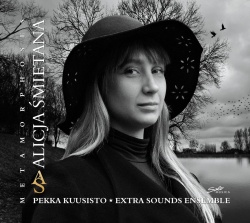 Artists: Alicja Smietana, Pekka Kuusisto
Artists: Alicja Smietana, Pekka Kuusisto
Title: Metamorphoses
Catalogue No.: SM 219
Release: 20.04.2015
Description
From a purely aesthetic (and artistic) point of view I have been especially interested in two things – creating the “inexistent” and transforming “worlds”, and also in consolidating what is invisible to the human eye, or what is inaudible to the human ear. But music should never be only a mirror reflecting reality just as we see it. It has ever been a window that opens up only to the artistic imagination. Besides many other factors, this window should in my view have one essential part: the ever-changing Improvisation – a somewhat overlooked subject but absolutely essential in the process of creating rather than just regurgitating.Born in 1983 in Krakow, Poland Alicja Smietana performs works from Bach to Contemporary music with – what was described by San Francisco Chronicle as – “Extraordinary brilliance and sensibility…”. Winner of numerous competitions and awards (including First Prize at the Israeli International Competition, Brahms Society Award and support from sir Georg Solti Foundation) Alicja studied at the Krakow Academy of Music in Poland with Mieczyslaw Szlezer and later on moved to study at the Kronberg Academy in Germany with Christian Tetzlaff and the Guildhall School of Music and Drama in London with David Takeno, Ofer Falk and Sven-Arne Tepl on viola.
Tracklist
“Concerto grosso op.6 no.4 in D-major”Fritz Kreisler
“Concerto in C-major”Antonio Vivaldi
“La Follia” Trio Sonata op. 1/12 RV 63
“L’estro armonico” Concerto for 2 violins
Alfred Schnittke
“Suite in the Old Style” – arr. By Alicja Śmietana
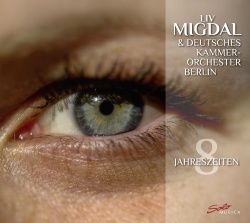
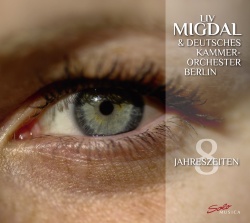 Artists:
Artists: 
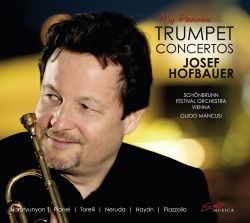
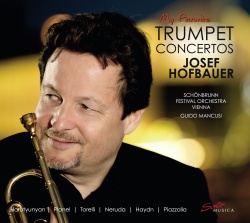
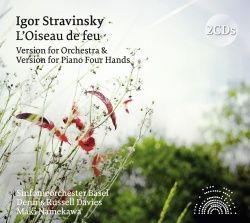
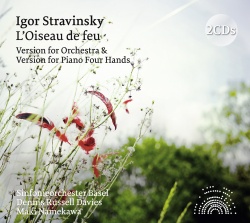
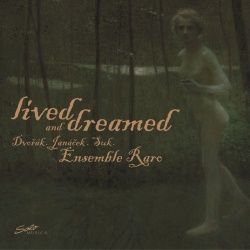
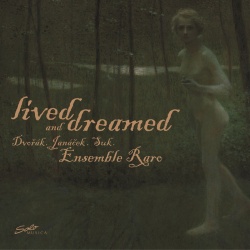
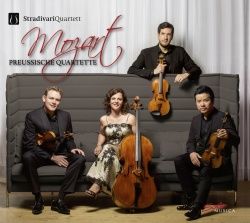
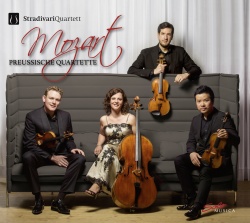
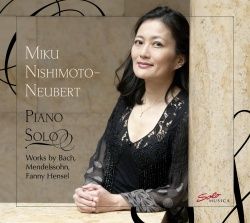
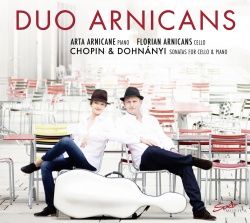
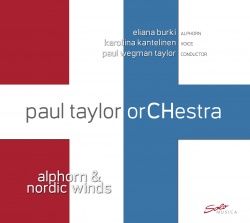
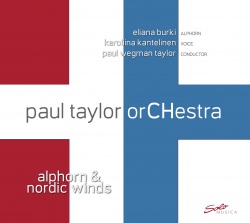 Artists:
Artists: 